The Lausanne Consultation on Jewish Evangelism – North America
Galen Peterson, D.Miss.
In the midst of public protests against the nation of Israel, a common slogan that is chanted and depicted on signs is “From the river to the sea Palestine will be free.” It is a direct reference to the Jordan River and the Mediterranean Sea, which makes it a proclamation of the desired boundaries of a future state of Palestine. That territory from the Jordan to the
Mediterranean would encompasses the entire land of Israel.[1] So, the real meaning of this phrase is a call for the elimination of the state of Israel, which would require the displacement and genocide of the Jewish people who dwell there.
This anti-Israel slogan is in direct conflict with the words that God has declared, as recorded in the Bible. For it is in Scripture that God reveals a series of truths regarding this particular plot of land spanning from the river to the sea.
The ultimate right to the Promised Land is determined by the sovereignty of God
As Psalm 24:1 declares: “The earth is the LORD’S, and all it contains, the world, and those who dwell in it.” Ironically, some Christians today either ignore or redefine the word “all” because they do not apply it to the land of Israel. They do the same with a related verse in Psalm 115:3 that reads: “Our God is in the heavens; He does whatever He pleases.” God’s sovereignty is further expressed by His declaration that “I will have mercy on whom I will have mercy” (Ex 33:19; Rom 9:15).
Much more could be said about this subject, but suffice it to say that the Bible makes it clear that äåäé(YHWH/Adonai) truly is Lord over the universe, and He has both the right and the power to grant possession of any part of His land to anyone that He chooses.
Galen Peterson is Executive Director of the American Remnant Mission (www.remnant.net) in Concord, CA, and adjunct professor of intercultural studies at Western Seminary (Portland, OR and San Jose, CA).
God exercised His right by granting the land of Canaan to the descendants of Abraham, Isaac and Jacob
A key aspect of the Abrahamic Covenant is the Promised Land. The boundaries of this land are frequently defined in the Bible, often in precise detail. The first reference to the land followed God’s promise in Genesis 12 that a great nation would come from Abram,[2] which would ultimately be the nation of Israel. Abram then began a journey into the land of Canaan, and, when he arrived there, God told him:
“Now lift up your eyes and look from the place where you are, northward and southward and eastward and westward; for all the land which you see, I will give it to you and to your descendants forever. . . Arise, walk about the land through its length and breadth; for I will give it to you” (Gen 13:14-15,17).
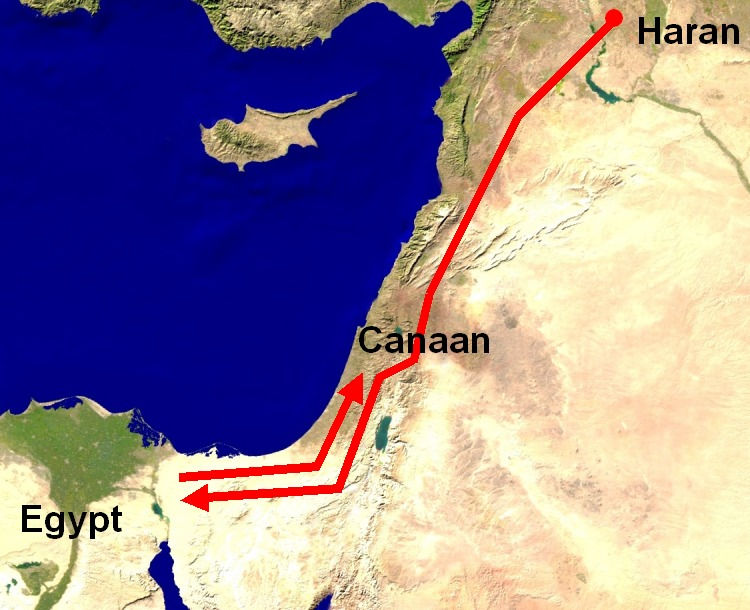
The extent of the Promised Land, therefore, was based on everywhere that Abram saw while he walked on his journey. Back in chapter 11 we are told that He was originally from the city of Ur, which is in the south of modern-day Iraq. But he had relocated to Haran, which is now just over the border from Iraq into Turkey, and a short distance northeast of the Euphrates River.
That is where God declared the Abrahamic Covenant to him, and it is where he began his journey, walking throughout the land of Canaan and seeing the lands that would establish the boundaries of the future Promised Land.
He also made a diversion to Egypt to escape a famine in the land of Canaan. (Gen 12:10). Without that famine it is likely that he would have stayed more
centrally in the land of Canaan and would not have ventured all the way across the Negev and Sinai wilderness areas. But by going to Egypt, it meant seeing with his own eyes the westernmost boundary of the land of Canaan, thus completing the connection between seeing and receiving representative portions of the full territory that was included in the covenant.
In Genesis 15, God finalized the covenant by declaring the specific boundaries allotted for the nation that would later arise from Abram:
On that day the LORD made a covenant with Abram, saying, “To your descendants I have given this land, from the river of Egypt as far as the great river, the river Euphrates” (Gen 15:18).
It is generally believed that the “river of Egypt” is a reference to the Wadi El Arish, a river valley that separates Egypt from the land of Canaan. The northeastern border of the
Promised Land is the headwaters of the Euphrates River where Abram began his journey. [3] Then in Genesis 15:19-20, God confirmed the extent of the rest of the territory by describing all of the Canaanite tribal lands that He was giving to Israel.[4]
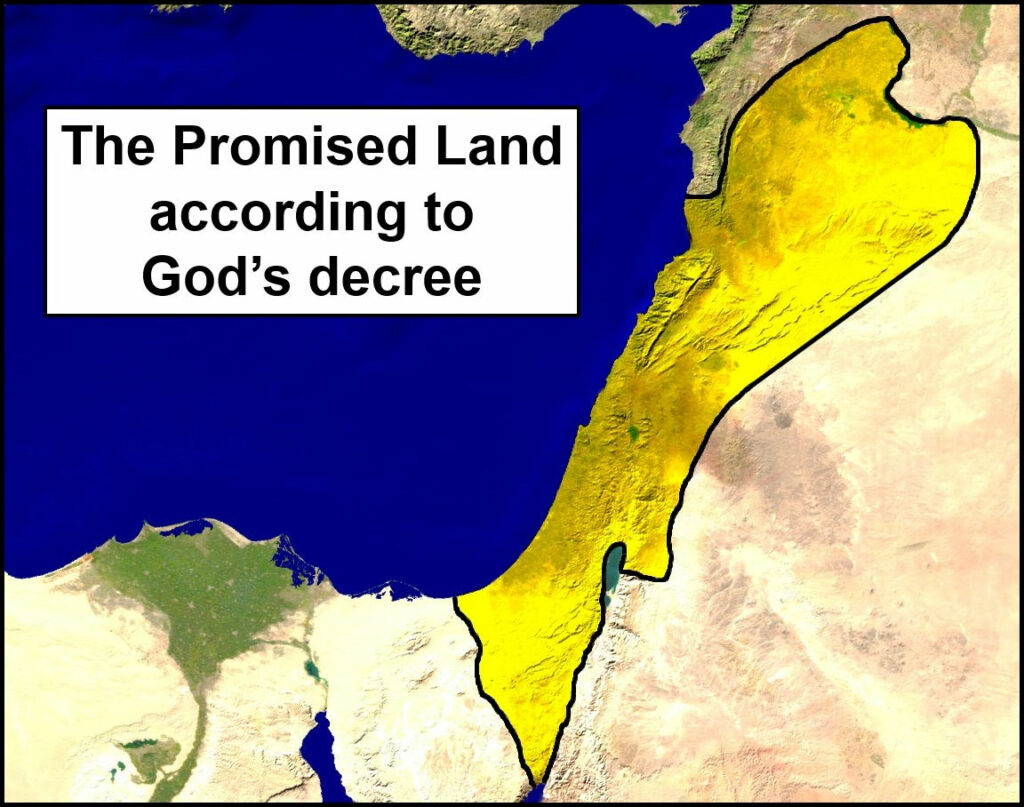
As the book of Joshua begins, God made it clear that the Promised Land extended to what is now called the Mediterranean Sea:

“Every place on which the sole of your foot treads, I have given
it to you, just as I spoke to
Moses. From the wilderness and this Lebanon, even as far as the great river, the river Euphrates, all the land of the Hittites, and as far as the Great Sea toward the setting of the sun, will be your territory” (Joshua 1:3-4).
Therefore, by taking into account where Abram walked on his journey, where the Canaanite tribes were located, and the specified water boundaries, we are given a rather complete sense of the extent of the land that God promised to the descendants of Abraham, Isaac and Jacob.
What happened next, however, was not the acquisition of the entirety of that mandate. In Numbers 34, God gave instructions regarding the extent of the Promised Land that the Israelites were to claim initially, and He gave very detailed boundaries for them to follow.
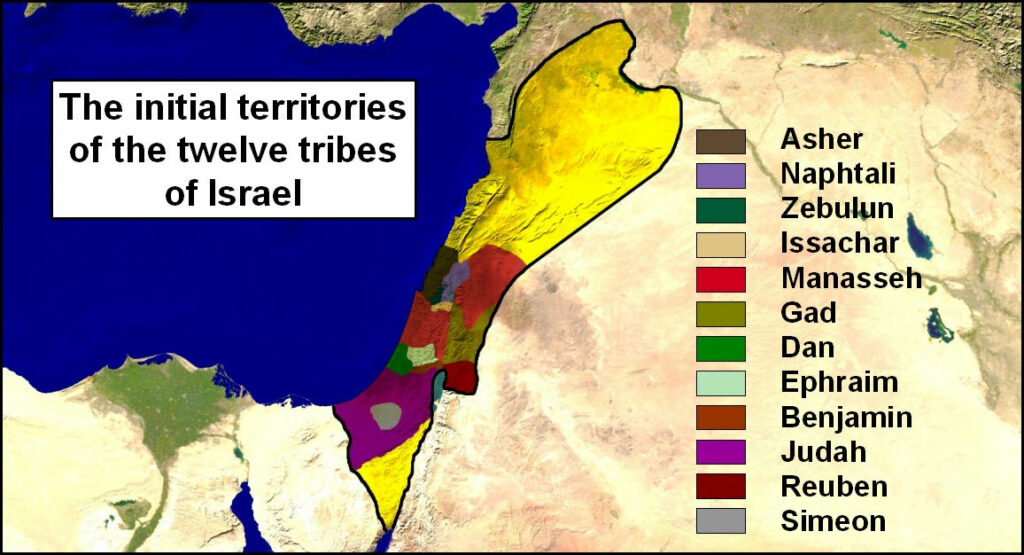
Later, when they actually entered the land, the twelve tribes of Israel were assigned specific territories within those boundaries. In fact, the description is so precise that seven full chapters of Joshua (nearly one-third of the book) are dedicated to those boundaries, which makes it clear that they did not dwell on the full Promised Land. Under David and Solomon the kingdom of Israel was extended to all of the borders originally designated by God (1 Ki 8:65), with two exceptions. Shortly after the tribe of Judah entered the Promised Land in the south and took possession of the region of Gaza, that coastal strip was invaded by the Philistines, who came by ships, and Judah lost that territory. Afterward it was never taken back by Judah or later by the kingdom of Israel under David and Solomon.
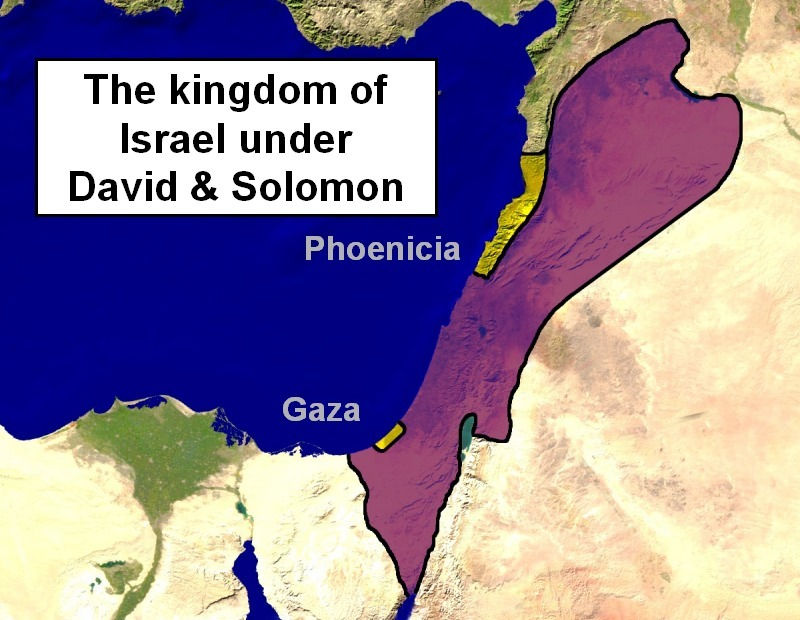
Likewise, the northern coastal region inhabited by the Phoenicians was never taken. So while David and Solomon came very close, there has never been a time when Israel possessed the entire Promised Land.
The subjugation of the Promised Land by the nations of the world
As time passed, the borders began shrinking, with the dividing of the kingdom, and then loss of territory by virtue of Assyrian and Babylonian conquests, followed by Greece and Rome. After the failed Bar Kokhba rebellion against Rome in 135 A.D., Jewish possession of the Promised Land came to a complete end. All of it had been lost, even though, as we will see, the Jewish people retained the divinely given legal right to the land.
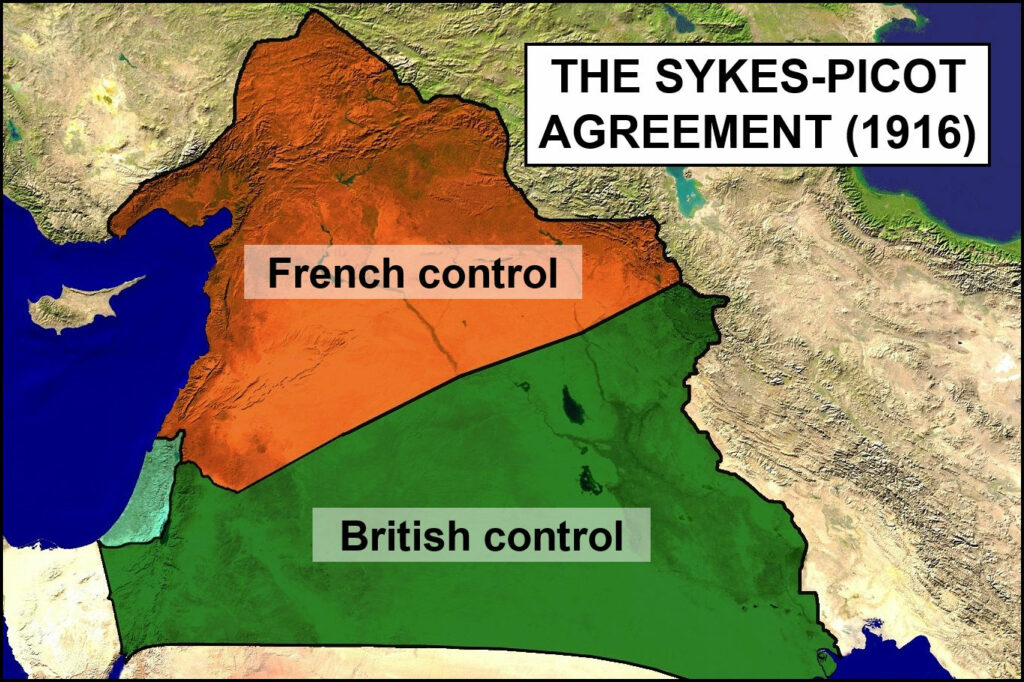
Subsequently, the land was controlled by the Byzantine Empire, Islamic rule, Crusaders and Mamluks. In the year 1516, the ancient land of Israel became part of the Ottoman Empire, which would last for 400 years. In spite of their dominance, the Ottomans made a strategic error by aligning with Germany in 1914 during the First World War. Two years later, in 1916, anticipating a victory in the war, British and French leaders made an agreement regarding the future administration of the defeated Ottoman territory. Named after the primary negotiators of the two countries, the Sykes-Picot Agreement established official policy that called for France to control the northern part of the empire, and the British to control the south. They could establish states within their respective areas however they saw fit. They also intended for the principal territory of ancient Israel to have an international administration.
At that time, Arthur Balfour, the British Foreign Secretary, had been a strong advocate for the Jewish people, especially those in Russia who had suffered in the physical violence of pogroms in that country. Balfour saw the need for finding a place where Jews could live in safety, and he was friendly toward those in the Jewish Zionist movement who believed the only suitable place for that home was in the land of their forefathers. The potential demise of the Ottoman Empire in the midst of World War1 presented such an opportunity. In 1917, one year after the Sykes-Picot Agreement, Balfour issued a letter to Lord Rothschild, a leader of the British Jewish community, that expressed the official position of the government in what became known as the Balfour Declaration:
“His Majesty’s government view with favour the establishment in Palestine of a national home for the Jewish people, and will use their best endeavours to facilitate the achievement of this object, it being clearly understood that nothing shall be done which may prejudice the civil and religious rights of existing non-Jewish communities in Palestine, or the rights and political status enjoyed by Jews in any other country.”
In 1920, two years after the war ended, representatives of the victorious allied nations met in San Remo, Italy. They adopted the position of the Balfour Declaration and incorporated it into the official policy for the creation of states from the fallen Ottoman Empire. In keeping with the Sykes-Picot Agreement of 1916, the San Remo Resolution gave France a mandate for the creation of Syria and Lebanon. And Britain received a mandate for the creation of Iraq and Palestine, with the latter being the “national home for the Jewish people,” as set forth in the Balfour Declaration.
The borders of the Jewish state of Palestine were to encompass much of the biblical Promised Land.
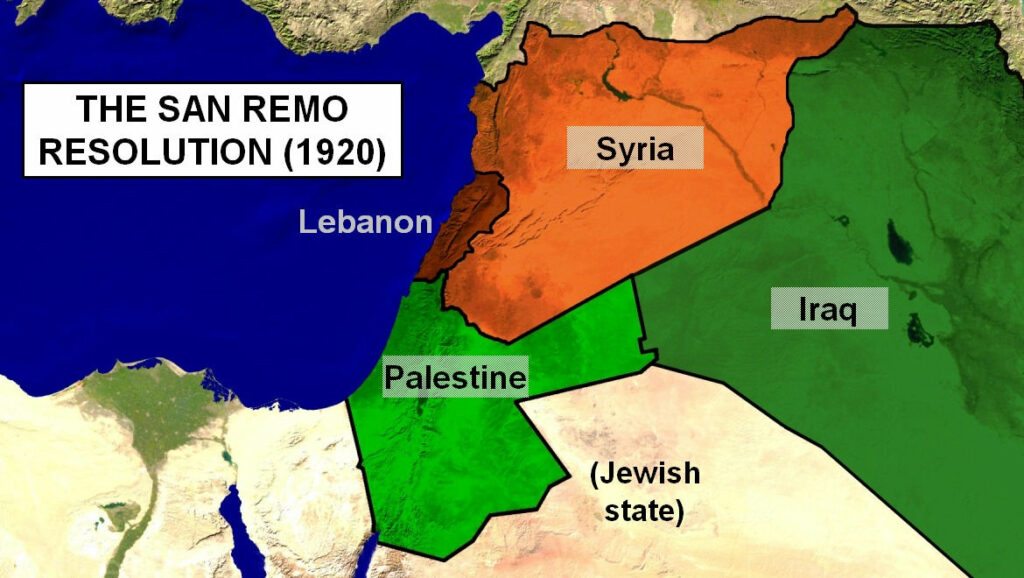
But objections arose over the prospects of a Jewish state being restored on the land of their forefathers. Wanting to appease the Arab population in the region who intensely opposed a Jewish homeland, British leaders began backing off their original intentions. When the League of Nations ratified the Palestine Mandate in 1922, instead of a Jewish state based on the biblical Promised Land according to the San Remo Resolution, it called for the establishment of “a national home for the Jewish people” extending from the Jordan River to the Mediterranean Sea. But Article 25 left the eastern side of the Jordan River undetermined. Later, that same year, the League of Nations amended the mandate with the Transjordan Memorandum, which specifically defined intentions for the eastern part of the territory. Thus, the mandate was partitioned into two statesa Jewish state called Palestine on the west bank of the Jordan River, and an Arab state called Transjordan[5] on the east bank of the river.6
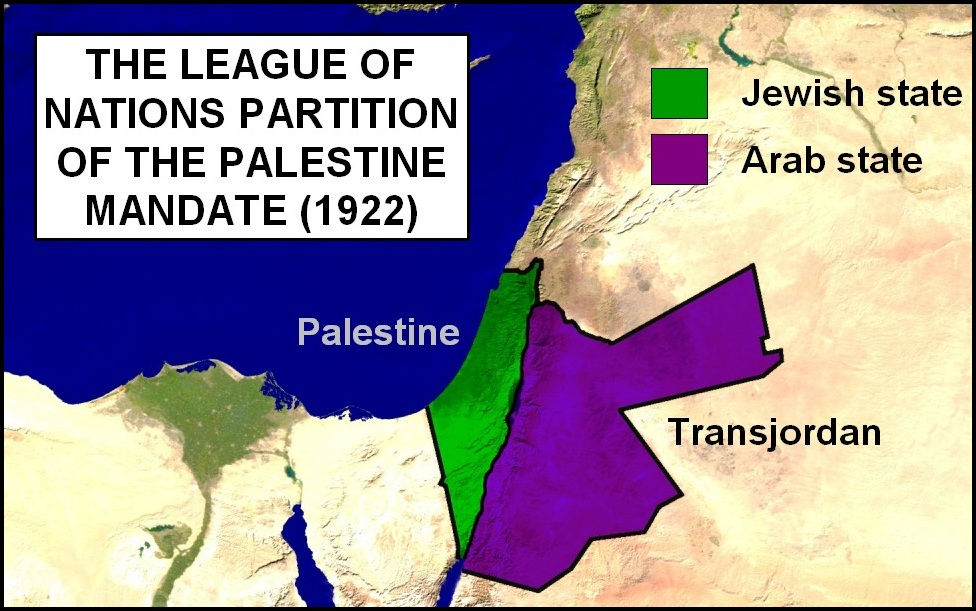
The dividing of the land did not stop there, however. The creation of the new states of Palestine and Transjordan were put on hold for over two decades. During that time, a series of commissionsPeel, Woodhead, Morrison-Grady, and UNSCOPdiscussed how the remaining portion of the Palestine Mandate could be divided again, with a second Arab state being taken from the Jewish homeland.
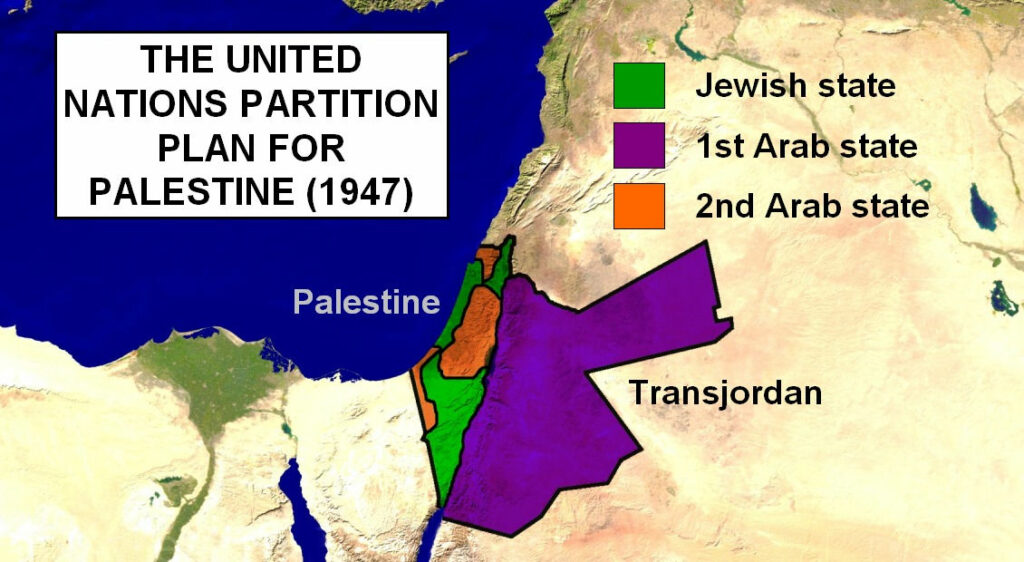
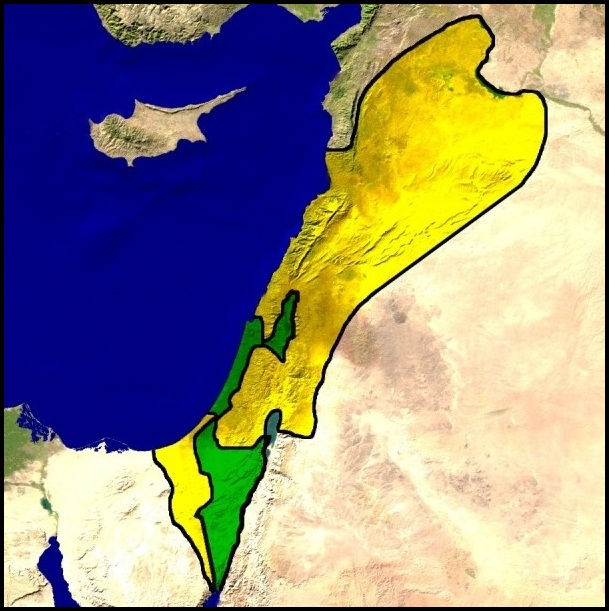
Eventually, in 1947, the newly formed United Nations approved a Partition Plan (shown above), in which Jews could have a patchwork state that only included the eastern Galilee, the Jezreel Valley, the northern Mediterranean coast, and the Negev.
Remarkably the Jewish leaders approved the plan, even though it was both a small portion of the land originally intended for a Jewish homeland, as well as a token portion of the actual Promised Land in the Bible (shown left).
Arab leaders, on the other hand, rejected the Partition Plan. The reality is that the Arab world at that time did not want a single inch of land to be a Jewish homeland. And in light of the words and actions that are evident today, it is not difficult to see how that position is still widely held.
Altogether, after decades of continually dividing the land, only 13 percent remained of the original Jewish homeland that had been determined 25 years earlier (shown left).
from a point two miles west of the town of Akaba on the Gulf of that name up the centre of the Wady Araba, Dead Sea and River Jordan to its junction with the River Yarmuk: thence up the centre of that river to the Syrian frontier.” In so doing, it confirmed the intention for the Jewish state of Palestine to encompass all land to the west of that boundary.
In any event, when Israel received its independence in 1948 on those minimal lands, the new nation was immediately invaded by the surrounding Arab countries, who sought to take away every last plot of ground designated for Jews. But that move ended in defeat, and Israel was actually able to regain some of the land that had been taken away by the politicians who went back on their commitments years before. Those borders were ratified in a series of armistice agreements with each of the invading Arab nations the following year.
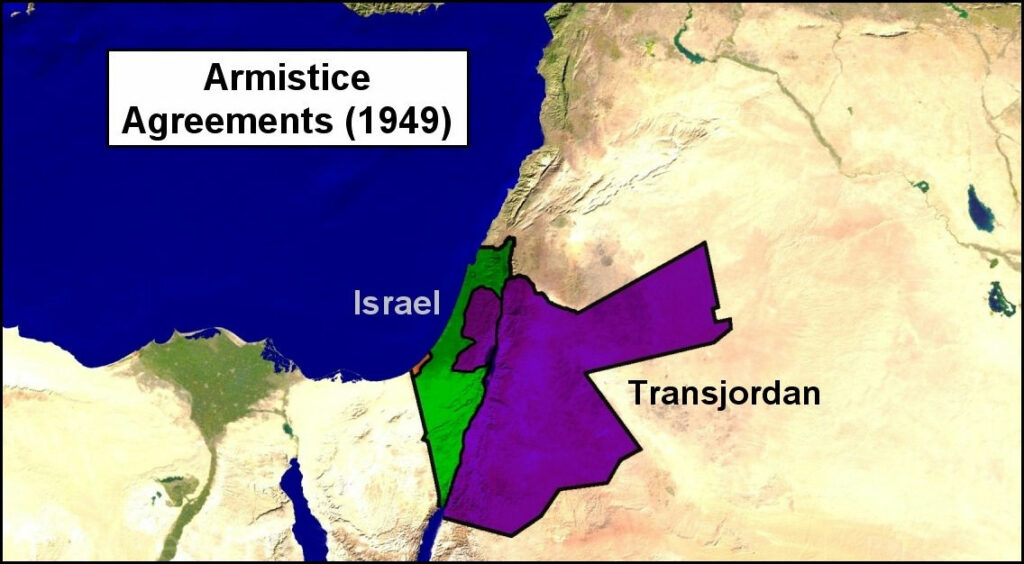
In the midst of Israel’s War for Independence, Transjordan invaded and gained control of the West Bank of the Jordan River. So, in reality, that nation, which was renamed Jordan in 1949, was the one who occupied the West Bank. That territory was never part of its legal mandate. But, as we have seen, when the territory was first designated in modern times, the West Bank was to be included in the Jewish state, which was called Palestine at that time.
The chronicle of shifting borders has continued ever since, including Israel gaining control of the West Bank when it faced war again with multiple Arab nations in 1967, and then subsequently relinquishing control over portions of that land to the Palestinian Authority. But now, international calls can increasingly be heard for Israel to relinquish all of the disputed land that it won in 1967.
Without question, much of the confusion evident today is that the world neglects all of the legal commitments made prior to 1948, leaving the assumption that the present conflict is entirely a matter of Israel controlling “occupied land.” It is clearly not that simple. This present reality has been substantially shaped by the events of history. Unfortunately, it is a history that few people know, or even have a desire to know. But for those who seek to understand the situation more fully, especially for people of faith, it is important, not just to know the history, but to view it in the light of key biblical principles that relate specifically to the Promised Land: The permanent nature of divine entitlement to the Promised Land
As part of the Abrahamic Covenant, the land promise shares the overall nature of the covenant, most notably, its permanence. God declared:
“I will establish My covenant between Me and you and your descendants after you throughout their generations for an everlasting covenant, to be God to you and to your descendants after you. I will give to you and to your descendants after you, the land of your sojournings, all the land of Canaan, for an everlasting possession” (Genesis 17:7-8).
This sense of permanence is magnified in the 105th Psalm:
He is the LORD our God; His judgments are in all the earth. He has remembered His covenant forever, the word which He commanded to a thousand generations, the covenant which He made with Abraham, and His oath to Isaac. Then He confirmed it to Jacob for a statute, to Israel as an everlasting covenant, saying, “To you I will give the land of Canaan as the portion of your inheritance” (Ps 105:7-11).
This passage brings out the permanence of the covenant in four ways:
- It is an everlasting covenant. The Hebrew term íìÈBò úéø‹a÷ (brit olam) is a recurring phrase associated with the Abrahamic Covenant” (Gen 17:7,13,19; 1 Chr 16:17; Ps 105: 11).
Some people argue that although olam normally means “everlasting,” it can also mean “a long time,” thus implying an endpoint of the covenant and the land promise. But in passages that convey the sense of unending perpetuity, additional terms are used to expand the temporal scope. These additional terms of unending permanence are evident in each of the passages associated with the Abrahamic covenant (including the next two points).
- It is remembered by God forever. The Hebrew term ãòÇ (ad)typically translated as
“forever” is used elsewhere to describe the nature of God being without end (i.e. Ex 15:18). The remembrance of God is an expression of reconnection to the initial promise and reconfirmation of its terms. Thus, the land promise is reconfirmed without end, just as it was declared initially.
- It endures to a thousand generations. This phrase is undoubtedly a hyperbolic figure of speech that implies a number that exceeds one’s ability to count. In other words, it is a point that cannot be attained, thus connoting permanence. In other passages related to the
Abrahamic Covenant, similar phrases are used, such as “your descendants after you” (Gen 35:12), and “throughout their generations” (Gen 17:9).
- It is an inheritance. According to the divine law given by God in the Pentateuch, the inheritance of land was structured in such a way that it would always remain within a particular tribe, even if an individual plot of land was lost for any reason (Num 36:7-9). The concept of the jubilee was a further means of restoring land to the original owner according to an established inheritance (Num 36:4). That principle underlies the nature of the Promised Land as a national inheritance that is permanently retained by the descendants of Abraham, Isaac, and Jacob according to the original allocation of the land.[6]
The permanence of the land element of the Abrahamic Covenant is reflected in additional ways, including the ratification of the covenant being unilateral on God’s part (Gen 15:12-21), the covenant being secured by God’s unbreakable oath (Gen 22:16; Heb 6:17), [7] and the format of the covenant following Royal Land Grant agreements that were common in the Ancient Near East.9
Moreover, the prophets explicitly foretold two times when the Jewish people would return to the Promised Land after being exiled. The first time was the return from Babylonian captivity. Isaiah foretold a second occurrence in the days that would come after the arrival of the Messiah:[8]
Then it will happen on that day that the Lord will again recover the second time with His hand the remnant of His people, who will remain, from Assyria, Egypt, Pathros, Cush, Elam, Shinar, Hamath, and from the islands of the sea. And He will lift up a standard for the nations and assemble the banished ones of Israel, and will gather the dispersed of Judah from the four corners of the earth (Is 11:11-12).
This prophecy precisely matches the global regathering of Jews in modern times. Both Jeremiah (31:40) and Ezekiel (37:21-25) affirm that this second return will not need to be repeated because they will live on the land permanently. That affirmation is consistent with the continually recurring theme in Scripture that the right of the descendants of Abraham to the land has been determined by God.
The present circumstances are not an indication of the continual reality of the land promise of the Abrahamic Covenant
There has never been a time in history when God’s promise regarding the land has been completely fulfilled. According to the expressed will of the Creator of the universe, Abraham was the rightful owner of the full measure of the land while he walked its length and breadth. But, at that time, he was never recognized by the people dwelling on those lands as the holder of the deed. The same was true for Abraham’s heir, Isaac, and his heir, Jacob.
Certainly that was the case for the next four centuries while their descendants were enslaved in Egypt. Later, the Babylonians did not recognize the right of the people of Judah to the land when they were taken away to captivity. The same was true for the Romans in the days of Jesus (Yeshua). And it has been the case in every generation since then. But their inheritance always remained valid. The point is that you cannot look at the circumstances of the day and decide what the ultimate reality is.
The complete fulfillment of God’s promise to Abraham and his descendants may not be realized until Jesus returns to this earth and inaugurates His Messianic kingdom that will last a thousand years (Rev 20:4-6). [9] But the present situation in the world does not negate the certainty of that eventual fulfillment whatsoever.
Acceptance of the concept of the Promised Land serves as an indicator of willingness to accept God’s sovereignty
From the moment that Adam and Eve sinned in the Garden of Eden, humanity has engaged in a dispute over the sovereignty of God. That dispute is intensified when issues of fairness, jealousy and coveting come into play. Surely that is the case regarding the Promised Land. As we have seen, God has stated His terms. The only question iswho is willing to abide by them? The answer to that question serves as a prime indicator of whether or not people accept the lordship of the God of the Bible over their lives.
The enemies of Israel have made their answer clear. Their actions today directly correspond to Psalm 83, which describes the enemies of Adonai making plans against His people and conspiring together to “wipe them out as a nation so that the name of Israel will be remembered no more” and to possess for themselves “the pastures of God” (Ps 83:4,12).
This description closely fits the current conspiracy over the land. Wiping out the nation of Israel, while claiming the land for a non-Jewish Palestinian state is precisely what opponents of Israel are conveying with the words, “From the river to the sea, Palestine will be free.” Thus, the Bible makes it clear that their words are more than a mere political statement; they actually reflect a rejection of the lordship of the true and living God. This blatant rejection should not be taken lightly. For the prophet Joel has foretold a coming day when the nations of the world will be judged for their rejection of God’s sovereignty, specifically in regard to His granting of the Promised Land in accordance with the Abrahamic Covenant:
“For behold, in those days and at that time, when I restore the fortunes of Judah and Jerusalem, I will gather all the nations and bring them down to the valley of Jehoshaphat. Then I will enter into judgment with them there on behalf of My people and My inheritance, Israel, whom they have scattered among the nations; and they have divided up My land” (Joel 3:1-2).
This warning is directly related to the protection clause of the Abrahamic Covenant in which God declared His intention to curse those who curse Abraham and his descendants (Gen 12:3). As Joel demonstrates, the ultimate determinative factor inviting that curse is the division of the land that is promised and secured by God in the covenant because it is, in reality, a rejection of the covenant itself.
Because of the serious nature of this matter, those who accept the sovereignty of the
LORD and believe in Jesus by faith have a solemn calling to uphold the truth of the Word of God in its totality. It is a calling that necessitates much discernment in a world marked by confusion and turmoil. That means having a solid understanding of both Scripture and the events of history that have shaped this present world scene. Clearly, much ignorance abounds today, not just among zealous but misled college students, but among parents who oversee the education of their children, as well as within the halls of government and even in our places of worship. This is a call for leaders in ministry, especially, to make the effort to investigate and to comprehend the events of the past, and to dedicate ourselves to a rigorous reliance on Scripture as our guide through the complex issues of life, including the on-going conflict over the same land of the covenant promise.
Conclusion
The Bible resolutely demonstrates that the former land of Canaan is the divinely given and unbreakable inheritance of the descendants of Abraham, Isaac and Jacobthe Jewish people. That understanding, at least in part, moved international leaders of the early twentieth century to commit officially to the re-establishment of that same Promised Land as the Jewish homeland, stretching from the entire land between the Jordan River and the Mediterranean Sea. But, over time, subsequent leaders failed profoundly in their willingness to keep those promises by continually dividing the intended homeland into smaller and smaller pieces. And now hostile forces have risen up with the intent of finishing that division by claiming the entire land from the river to the sea for themselves, and they are being supported by voices around the world parroting those same words.
In spite of that unfortunate reality, this is a time to acknowledge that the God of the Bible is still a promise-keeping God. Most notably, it is a time to recognize that God’s promise to believers in Jesus of an inheritance that secures everlasting life in the world to come is only as trustworthy as His promises that can only be fulfilled in this world, including the granting of the Promised Land as an inheritance to Abraham and his descendants from the river to the sea.[10]
[1] A popular perception of the phrase, “from the river to the sea” might be summed up by the words of congresswoman Rashida Tlaib, who wrote, “From the river to the sea is an aspirational call for freedom, human rights, and peaceful coexistence, not death, destruction, or hate” (Rashida Tlaib [@RashidaTlaib], 2023, November 3, https://twitter.com/RashidaTlaib/status/1720574880557539763). But that interpretation is inconsistent with the way that it was originally intended, as well as the way that it is currently intended by Hamas, the most influential proponent of the phrase. The Palestine Liberation Organization began using variants of the phrase in the 1960s. When Hamas revised its charter in 2017, it left no doubt as to the intended meaning of the phrase, declaring in paragraph 2: “Palestine, which extends from the River Jordan in the east to the Mediterranean in the west and from Ras al-Naqurah in the north to Umm al-Rashrash in the south, is an integral territorial unit. It is the land and the home of the Palestinian people. The expulsion and banishment of the Palestinian people from their land and the establishment of the Zionist entity therein do not annul the right of the Palestinian people to their entire land and do not entrench any rights therein for the usurping Zionist entity.” And again, in paragraph 20: “Hamas rejects any alternative to the full and complete liberation of Palestine, from the river to the sea.”
[2] His name was later changed to Abraham in Genesis 17:5.
[3] Later, in Exodus 23:31, God made it clear that the southern boundary extended all the way to the Red Sea.
[4] Each of the tribal lands have been identified, with the exception of the Kenizzites who possibly lived on the border of modern-day Saudi Arabia.
[5] The Hashemite Kingdom of Transjordan was granted statehood by the United Nations in 1946 and renamed itself as the Hashemite Kingdom of Jordan in 1949 after occupying and annexing the west bank of the Jordan in 1948. 6 The memorandum explicitly defined Transjordan as encompassing “all territory lying to the east of a line drawn
[6] For a discussion on the legal aspects of biblical land inheritance, see Richard H. Hiers (1993), “Transfer of Property by Inheritance and Bequest in Biblical Law and Tradition,” Journal of Law and Religion. 10:121-155.
[7] Biblical oaths (úBòá¯L÷) were considered to have no contingency for breaking the commitment, thus making them absolute and legally binding. Hebrews 6:17 describes God’s oath as being ἀμετάθετος”unchangeable.” 9 See Moshe Weinfeld, “The Covenant of Grant in the Old Testament and in the Ancient Near East,” JAOS 90 (1970), 185.
[8] In Isaiah 11:1 He is described as the “Branch,” a widely acknowledged term for the Messiah.
[9] Ezekiel 48 describes the boundaries of the millennial kingdom with great precision, which negates the more generalized nature of amillennial interpretations.
[10] This connection is depicted in the prophecy of the New Covenant in Jeremiah 31:31-37.


